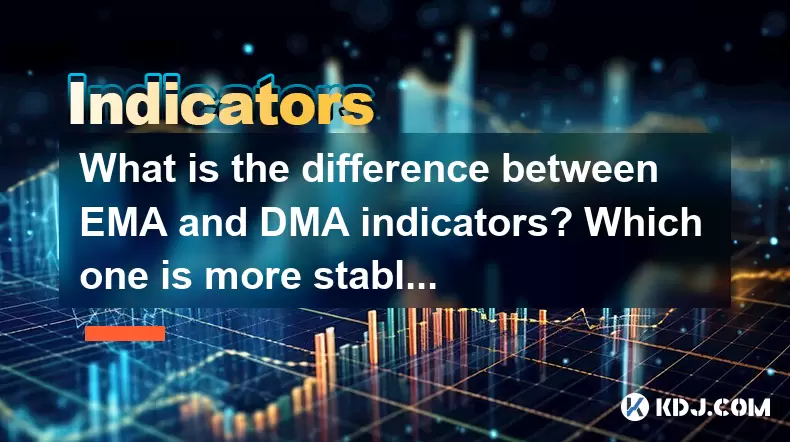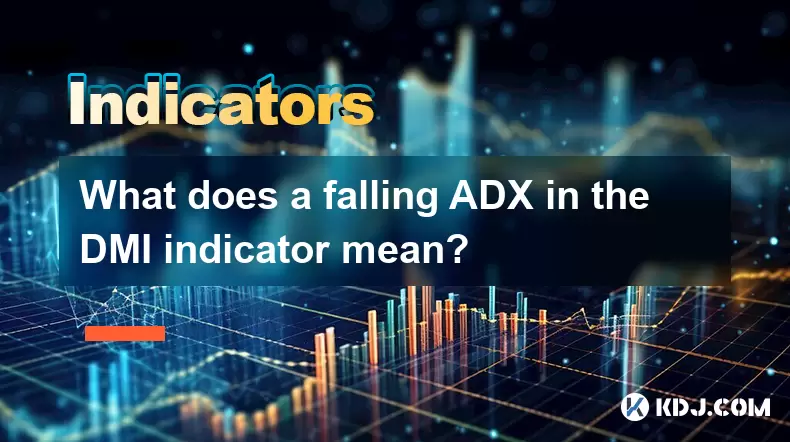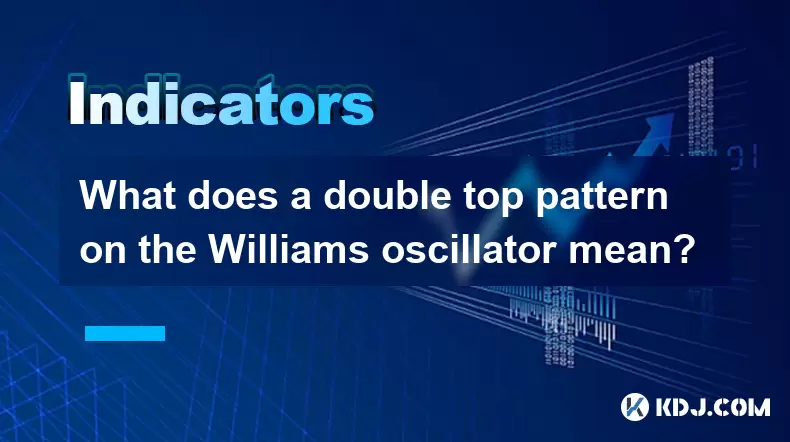-
 Bitcoin
Bitcoin $116700
0.24% -
 Ethereum
Ethereum $3973
4.34% -
 XRP
XRP $3.283
7.68% -
 Tether USDt
Tether USDt $1.000
0.01% -
 BNB
BNB $789.8
2.27% -
 Solana
Solana $176.2
3.31% -
 USDC
USDC $0.9999
0.00% -
 Dogecoin
Dogecoin $0.2238
5.14% -
 TRON
TRON $0.3389
-0.51% -
 Cardano
Cardano $0.7907
4.03% -
 Stellar
Stellar $0.4527
10.02% -
 Hyperliquid
Hyperliquid $41.07
4.27% -
 Sui
Sui $3.794
1.77% -
 Chainlink
Chainlink $19.49
10.40% -
 Bitcoin Cash
Bitcoin Cash $580.9
0.74% -
 Hedera
Hedera $0.2617
4.32% -
 Avalanche
Avalanche $23.41
3.67% -
 Ethena USDe
Ethena USDe $1.001
-0.03% -
 Litecoin
Litecoin $122.4
1.38% -
 Toncoin
Toncoin $3.364
1.49% -
 UNUS SED LEO
UNUS SED LEO $8.988
0.37% -
 Shiba Inu
Shiba Inu $0.00001295
2.82% -
 Uniswap
Uniswap $10.62
5.75% -
 Polkadot
Polkadot $3.922
4.46% -
 Dai
Dai $1.000
0.01% -
 Bitget Token
Bitget Token $4.494
2.15% -
 Monero
Monero $268.0
-1.30% -
 Cronos
Cronos $0.1523
3.68% -
 Pepe
Pepe $0.00001127
4.43% -
 Aave
Aave $285.4
4.85%
What is the difference between EMA and DMA indicators? Which one is more stable, the direct moving average?
EMA is more responsive to recent price changes, while DMA, when displaced, offers a more stable signal by aligning with price action in crypto trading.
Jun 01, 2025 at 02:49 pm

The world of cryptocurrency trading is filled with various technical indicators that help traders analyze market trends and make informed decisions. Among these, the Exponential Moving Average (EMA) and the Displaced Moving Average (DMA) are two popular tools. In this article, we will delve into the differences between EMA and DMA indicators, and explore which one might be considered more stable, particularly in the context of the direct moving average.
Understanding the Exponential Moving Average (EMA)
The Exponential Moving Average (EMA) is a type of moving average that places a greater weight and significance on the most recent data points. This makes it more responsive to new information compared to the Simple Moving Average (SMA), which assigns equal weight to all values in the period.
The formula for calculating the EMA is as follows:
[ \text{EMA}{\text{today}} = (\text{Price}{\text{today}} \times \text{Multiplier}) + (\text{EMA}_{\text{yesterday}} \times (1 - \text{Multiplier})) ]
Where the Multiplier is calculated as:
[ \text{Multiplier} = \frac{2}{\text{Period} + 1} ]
The EMA's responsiveness to recent price changes makes it particularly useful for traders who want to capture trends quickly. For example, a 20-day EMA will react more swiftly to price changes than a 20-day SMA, making it a preferred choice for short-term traders.
Understanding the Displaced Moving Average (DMA)
The Displaced Moving Average (DMA) is a variation of the moving average where the average is shifted forward or backward in time. This displacement is intended to better align the moving average with the price action, providing a clearer signal of potential future movements.
To calculate the DMA, you first compute a standard moving average, typically a Simple Moving Average (SMA), and then displace it by a specified number of periods. For instance, if you are using a 20-day SMA and want to displace it by 5 days forward, you would plot the 20-day SMA 5 days ahead of the current price.
The DMA's ability to be displaced allows traders to anticipate potential price movements more effectively. It is often used to confirm trends or to identify potential support and resistance levels.
Comparing EMA and DMA: Key Differences
The key differences between EMA and DMA lie in their construction and application. The EMA focuses on giving more weight to recent prices, making it more sensitive to short-term price movements. On the other hand, the DMA is a standard moving average that is shifted in time, aiming to better align with price action and forecast future movements.
In terms of responsiveness, the EMA is more reactive to recent price changes, which can be beneficial for traders looking to enter or exit positions quickly. Conversely, the DMA's displacement feature allows it to provide a more forward-looking perspective, which can be useful for anticipating future price movements.
Which Indicator is More Stable: EMA or DMA?
When considering stability, it is important to define what stability means in the context of trading indicators. Stability can refer to how consistently an indicator provides signals and how resistant it is to false signals caused by market noise.
The EMA, due to its sensitivity to recent price changes, can be less stable than other moving averages like the SMA. Its quick responsiveness can lead to more frequent signals, which may result in more false positives or false negatives. This can be particularly challenging in the volatile cryptocurrency market, where price swings are common.
On the other hand, the DMA, when properly displaced, can offer a more stable signal by aligning more closely with the actual price action. By displacing the moving average, traders can reduce the impact of short-term fluctuations and focus on longer-term trends. This can lead to fewer false signals and a more reliable indicator for trend confirmation.
Is the Direct Moving Average More Stable?
The Direct Moving Average (DMA) can be considered more stable than the EMA in certain contexts. The direct moving average, in this case, refers to the standard moving average without any displacement. A direct moving average, such as the Simple Moving Average (SMA), assigns equal weight to all data points within the specified period, making it less responsive to recent price changes and more stable over time.
The stability of the direct moving average comes from its ability to smooth out price data over a longer period, reducing the impact of short-term volatility. This makes it a preferred choice for traders who prioritize stability over quick responsiveness.
However, the stability of the direct moving average can also be a disadvantage in rapidly changing markets. In the cryptocurrency market, where prices can change dramatically in a short period, the slower response of the direct moving average might cause traders to miss out on potential opportunities.
Practical Application of EMA and DMA in Cryptocurrency Trading
To understand how these indicators are applied in real-world trading, let's explore some practical examples.
Using EMA for Short-Term Trading:
- Choose an appropriate period for the EMA, such as a 12-day or 26-day EMA, depending on your trading strategy.
- Plot the EMA on your trading chart.
- Look for crossovers between the EMA and the price or between two EMAs (e.g., a 12-day EMA crossing above a 26-day EMA) as potential buy or sell signals.
- Monitor the EMA closely, as its responsiveness can lead to frequent signals that require quick action.
Using DMA for Trend Confirmation:
- Calculate a standard moving average, such as a 20-day SMA.
- Determine the appropriate displacement period based on your analysis of past price movements.
- Plot the DMA on your chart, displacing it forward or backward as needed.
- Use the DMA to confirm trends by observing whether the price remains above or below the displaced average.
- Adjust the displacement period as needed to optimize the alignment with current price action.
Choosing Between EMA and DMA: Factors to Consider
When deciding between the EMA and DMA, traders should consider their trading style, time horizon, and risk tolerance. For short-term traders who prioritize quick entry and exit points, the EMA's responsiveness might be more suitable. Conversely, for traders who prefer a more stable and forward-looking approach, the DMA could be a better choice.
Additionally, the choice between EMA and DMA may also depend on the specific cryptocurrency being traded. Some cryptocurrencies exhibit higher volatility, which might favor the use of the more responsive EMA. Others might have more stable price movements, where the DMA's ability to anticipate trends could be more beneficial.
Frequently Asked Questions
Q1: Can EMA and DMA be used together in a trading strategy?
Yes, EMA and DMA can be used together to create a more robust trading strategy. For instance, traders might use the EMA to identify short-term entry and exit points, while using the DMA to confirm longer-term trends. By combining these indicators, traders can benefit from the strengths of both.
Q2: How do I determine the optimal period for an EMA or DMA?
The optimal period for an EMA or DMA depends on your trading strategy and the specific cryptocurrency you are trading. For short-term trading, shorter periods such as 12 or 26 days for EMA and 10 or 20 days for DMA might be more appropriate. For longer-term trading, periods of 50 or 200 days could be more suitable. It's important to backtest different periods to find what works best for your specific needs.
Q3: Are there any other moving averages I should consider alongside EMA and DMA?
Yes, there are several other moving averages that traders might consider, such as the Simple Moving Average (SMA), the Weighted Moving Average (WMA), and the Hull Moving Average (HMA). Each of these has its own strengths and weaknesses, and they can be used in combination with EMA and DMA to enhance your trading strategy.
Q4: How does the volatility of the cryptocurrency market affect the choice between EMA and DMA?
The high volatility of the cryptocurrency market can significantly impact the effectiveness of moving averages. In highly volatile markets, the EMA's quick responsiveness might lead to more false signals, while the DMA's ability to anticipate trends could be more beneficial. However, during periods of lower volatility, the EMA might provide more accurate signals, and the DMA might be less necessary. It's important to adapt your choice of indicators based on the current market conditions.
Disclaimer:info@kdj.com
The information provided is not trading advice. kdj.com does not assume any responsibility for any investments made based on the information provided in this article. Cryptocurrencies are highly volatile and it is highly recommended that you invest with caution after thorough research!
If you believe that the content used on this website infringes your copyright, please contact us immediately (info@kdj.com) and we will delete it promptly.
- Roman Storm, Funding Effort, and the Looming Defense Retrial: A New York Minute on the Tornado Cash Case
- 2025-08-09 02:50:14
- Crypto's Wild Ride: XRP, Dogecoin, and the Altcoin Surge You Can't Ignore
- 2025-08-09 02:50:14
- Elon Musk, Bitcoin, and the Enduring Power of Approval: A Crypto Love Story?
- 2025-08-09 03:50:15
- Ruvi AI: The Next Big Thing After Ripple on CoinMarketCap?
- 2025-08-09 03:50:15
- Floki Price Surges: Elliott Wave and Fibonacci Setups Point to Potential Gains!
- 2025-08-09 02:30:16
- Pepe Price, RTX (Remittix?) & the $10K ETH Dream: NYC Crypto Chatter
- 2025-08-09 02:30:16
Related knowledge

What does it mean when the TRIX indicator suddenly diverges downward after a long period of convergence?
Aug 09,2025 at 12:56am
Understanding the TRIX Indicator in Cryptocurrency TradingThe TRIX indicator, or Triple Exponential Average, is a momentum oscillator used in technica...

Why is the rise limited after a MACD bottoming divergence?
Aug 09,2025 at 12:07am
Understanding MACD Bottoming Divergence in Cryptocurrency TradingThe MACD (Moving Average Convergence Divergence) is a widely used technical indicator...

What does it mean when the OBV continues to rise but the price is trading sideways?
Aug 08,2025 at 10:35pm
Understanding On-Balance Volume (OBV)On-Balance Volume (OBV) is a technical indicator that uses volume flow to predict changes in stock or cryptocurre...

What does a falling ADX in the DMI indicator mean?
Aug 09,2025 at 03:16am
Understanding the ADX and DMI Indicator FrameworkThe DMI (Directional Movement Index) is a technical analysis tool developed by J. Welles Wilder to id...

What does a double top pattern on the Williams oscillator mean?
Aug 09,2025 at 02:36am
Understanding the Williams %R OscillatorThe Williams %R oscillator is a momentum indicator developed by Larry Williams to identify overbought and over...

What is a nonce and how is it used in Proof of Work?
Aug 04,2025 at 11:50pm
Understanding the Concept of a Nonce in CryptographyA nonce is a number used only once in cryptographic communication. The term 'nonce' is derived fro...

What does it mean when the TRIX indicator suddenly diverges downward after a long period of convergence?
Aug 09,2025 at 12:56am
Understanding the TRIX Indicator in Cryptocurrency TradingThe TRIX indicator, or Triple Exponential Average, is a momentum oscillator used in technica...

Why is the rise limited after a MACD bottoming divergence?
Aug 09,2025 at 12:07am
Understanding MACD Bottoming Divergence in Cryptocurrency TradingThe MACD (Moving Average Convergence Divergence) is a widely used technical indicator...

What does it mean when the OBV continues to rise but the price is trading sideways?
Aug 08,2025 at 10:35pm
Understanding On-Balance Volume (OBV)On-Balance Volume (OBV) is a technical indicator that uses volume flow to predict changes in stock or cryptocurre...

What does a falling ADX in the DMI indicator mean?
Aug 09,2025 at 03:16am
Understanding the ADX and DMI Indicator FrameworkThe DMI (Directional Movement Index) is a technical analysis tool developed by J. Welles Wilder to id...

What does a double top pattern on the Williams oscillator mean?
Aug 09,2025 at 02:36am
Understanding the Williams %R OscillatorThe Williams %R oscillator is a momentum indicator developed by Larry Williams to identify overbought and over...

What is a nonce and how is it used in Proof of Work?
Aug 04,2025 at 11:50pm
Understanding the Concept of a Nonce in CryptographyA nonce is a number used only once in cryptographic communication. The term 'nonce' is derived fro...
See all articles

























































































